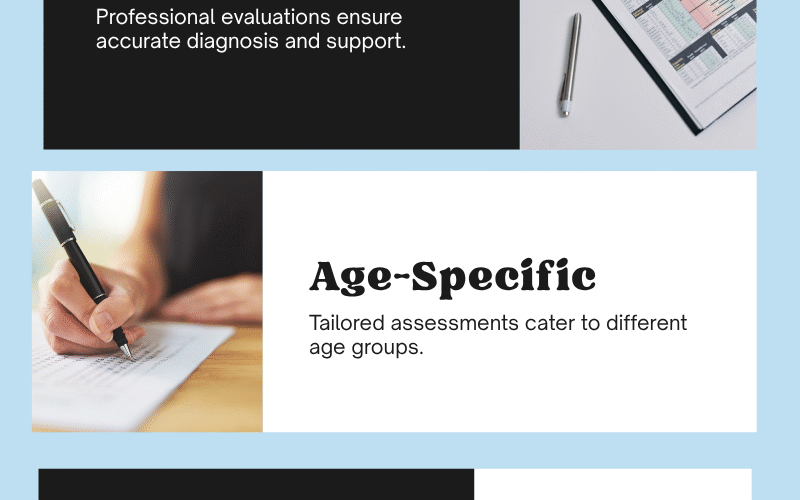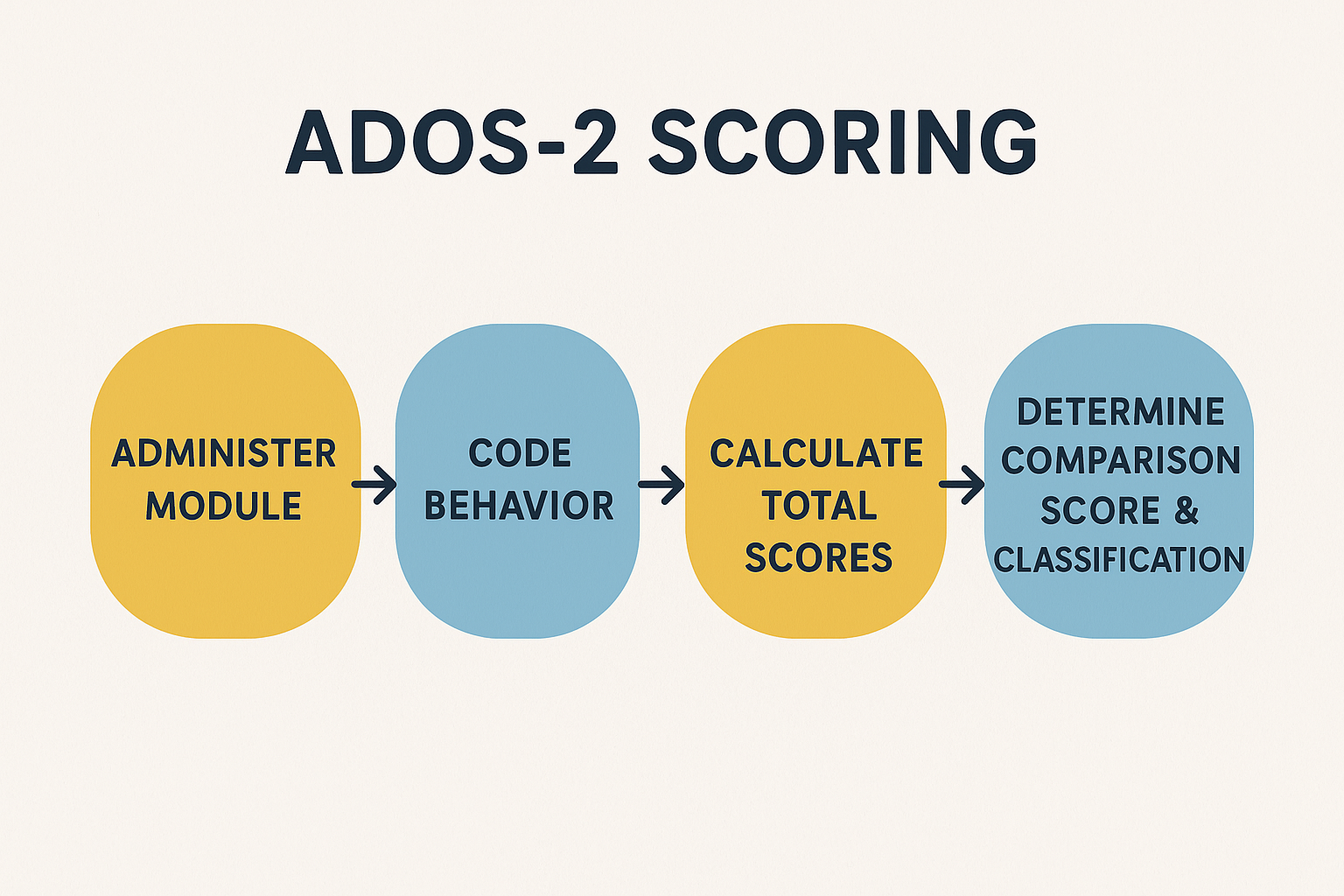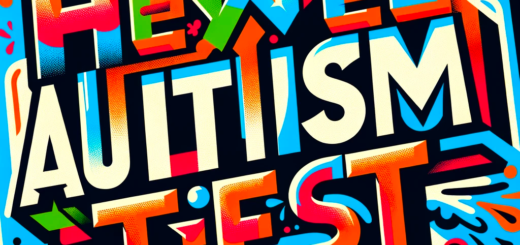| Tool | Type | Age Range | Administration Time | Administrator | Format | Key Features | Strengths | Limitations | Diagnostic Value |
| ADOS-2 (Autism Diagnostic Observation Schedule, 2nd Edition) | Observational assessment | All ages (includes modules for different developmental levels) | 30-60 minutes | Trained clinician | Structured and semi-structured activities with direct observation | – Considered “gold standard” diagnostic test – Consists of social interaction tasks between examiner and subject – Includes modules based on language/developmental level – Revised in 2012 to align with DSM-5 | – High reliability and validity – Direct observation of current behaviors – Standardized scoring algorithm – Strong discriminative ability | – Requires extensive training – Less effective for distinguishing subtle cases – Reduced accuracy with women, elderly, and high IQ individuals – Not suitable for blind/deaf individuals | High – considered gold standard when combined with clinical judgment |
| ADI-R (Autism Diagnostic Interview-Revised) | Structured interview | All ages | 1-2 hours | Trained clinician | Interview with parents/caregivers | – Covers developmental history – Focuses on three main domains: social interaction, communication, and restricted/repetitive behaviors – Emphasis on ages 4-5 years | – Comprehensive developmental history – Complements ADOS-2 – Good discrimination of childhood disorders | – Depends on caregiver availability and memory – Less effective for toddlers and adults – Subjective scoring – May include false positives | High – considered gold standard alongside ADOS-2 |
| SCQ (Social Communication Questionnaire) | Screening questionnaire | Age 4+ (mental age >2) | 10 minutes | Parent/caregiver completion | 40 yes/no questions | – Based on ADI-R content – Available in Lifetime and Current forms – Screens for referral to comprehensive evaluation | – Quick and cost-effective – Easy to administer – Parallels ADI-R content | – Variable sensitivity and specificity – Performance affected by child characteristics and demographics – Higher false positive rates in some populations | Moderate – good for initial screening but requires follow-up for diagnosis |
| SRS/SRS-2 (Social Responsiveness Scale) | Rating scale | All ages | 15-20 minutes | Parent, teacher, or caregiver | 65-item rating scale | – Measures social awareness, cognition, communication, motivation, and autistic mannerisms – Uses Likert scale responses | – Quantifies severity of social impairment – Can be completed by multiple informants – Sensitive to subclinical traits | – May not distinguish between autism and other social disorders – Variable performance across demographics – May have false positives | Moderate – good screening but less specific than ADOS/ADI-R |
| CARS/CARS-2 (Childhood Autism Rating Scale) | Rating scale | Children | Varies | Clinician | 15-item scale | – Rates severity across 15 behavioral domains – Scores from 1-4 for each item – Total score range: 15-60 | – Well-established reliability/validity – Useful for determining severity – Relatively simple to administer | – Less detailed than ADOS/ADI-R – May not capture subtle presentations – Somewhat older instrument | Moderate to High – widely used but less comprehensive than ADOS/ADI-R |
| M-CHAT (Modified Checklist for Autism in Toddlers) | Screening tool | 16-30 months | <10 minutes | Parent/caregiver completion | Short questionnaire | – Early screening for toddlers – Focuses on early indicators | – Quick early screening – Accessible to parents – Good for early identification | – Limited age range – Screening only (not diagnostic) – May miss subtle presentations | Low to Moderate – early screening only |
| GARS (Gilliam Autism Rating Scale) | Rating scale | 3-22 years | 5-10 minutes | Parent, teacher, or caregiver | Rating scale | – Assesses autism-related behaviors – Based on DSM criteria – Yields probability of ASD | – Brief administration – Based on current diagnostic criteria – Provides severity levels | – Less research validation than other tools – May not capture all aspects of ASD | Moderate – useful for screening and educational planning |




2 Responses
[…] And for a comparison of assessment tools:https://101autism.com/comparison-of-autism-assessment-tools/ […]
[…] https://101autism.com/comparison-of-autism-assessment-tools/ – comparison of ADOS-2, ADI-R, and other major autism assessment tools. […]